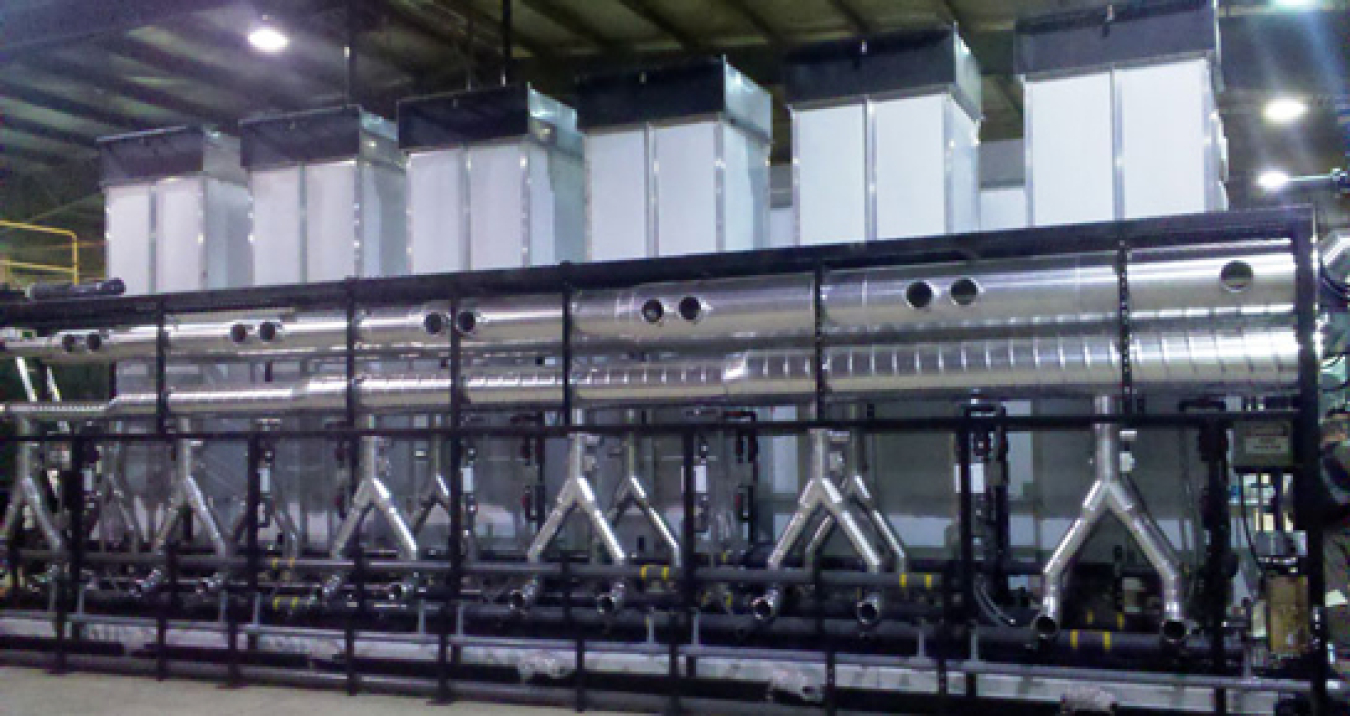
Developed as a result of lessons learned from the NETL funded demonstration project, the Altela 600 water treatment system (shown above) treats about 25,000 gallons per day of produced and flowback water from hydraulic fracturing. [Photo courtesy of Altela Inc.]
Drilling and fracturing wells produce water along with the natural gas. Some of this water is returned fracture fluid and some is natural formation water. The actual water production of a particular well depends on the well location, producing formation and the age of the well. The quality of the produced water is also dependent on local variables. For example, the type of produced water in some Rocky Mountain Basins varies from fresh to brackish. At the other extreme, produced waters in areas such as the Appalachian Basin and Michigan Basin may be 5 to 10 times saltier than seawater. Produced water may also contain small amounts of chemicals injected into a well as part of a hydraulic fracture or to prevent well clogging by scale or bacteria.
Almost all produced water is injected underground. The remainder is treated for reuse or discharged on the surface. The Office of Fossil Energy focuses its produced water program on analysis of regulatory decision making and treatment for beneficial reuse.
Regardless of the source, these produced waters that move back through the wellhead with the gas represent a stream that must be managed. States, local governments, and shale gas operators seek to manage produced water in a way that protects surface and ground water resources and, if possible, reduces future demands for fresh water. By pursuing the pollution prevention hierarchy of "Reduce, Reuse, and Recycle" these groups are examining both traditional and innovative approaches to managing shale gas produced water. This water is currently managed through a variety of mechanisms, including underground injection, treatment and discharge, and recycling. New water treatment technologies and new applications of existing technologies are being developed and used to treat shale gas produced water for reuse in a variety of applications. This allows water produced as a result of hydraulic fracturing has received significant attention in new producing areas such as the Marcellus shale trend in New York, Pennsylvania and West Virginia.
Minimizing the amount of water that enters the wellbore is often a cost-effective approach when much of the water is coming from sections of the wellbore that can be shut off. Down-hole separation of the water and gas with the water injected to a water-disposal formation also reduces production costs and environmental impacts of dealing with water on the surface. Most water that is produced at the surface is injected in water disposal wells or injected into producing fields to maintain reservoir pressure. In addition, many technologies are available to remove impurities so that produced water can be reused for industrial, agricultural and domestic use. Reuse is especially important in arid areas of the country that face water shortfalls.
DOE works with states, other government agencies and non-governmental organizations to develop tools to aid operators in meeting the environmental and economic challenges in managing produced water. The overall goal is to allow expansion of oil and gas production, while protecting the environment and increasing the supply of water for consumers.
Resources for Regulators and Producers
- Ground Water Protection Council Risk-Based Data Management System: provides data about oil and gas well locations, permitting, and production to the public and industry owners.
- Ground Water Protection Council State Oil and Natural Gas Regulations Designed to Protect Water Resources: Report [3.88 MB pdf], Addendum [1.59 MB pdf]
- Ground Water Protection Council Frac Focus website provides information on the voluntary disclosure of chemicals used in hydraulic fracturing fluids
- NETL Produced Water Management Information System: descriptions of produced water management technologies, Federal and state produced water regulations and an interactive decision-making tool.
- NETL Produced Water Management Technology Descriptions: detailed descriptions of technologies for reducing volumes of produced water, and disposal and treatment/reuse technologies. Fact sheets include extensive references.
- DOE R&D Program Water-Related Projects information, including projects for innovative water treatment.
